Fossil Finding In Ekalaka
Field Work
As a volunteer field crew member, you will have many chances to work with different types of fossils. Some are big (think Triceratops or T. rex), and some are small (think fish, frogs, and turtles). The Burpee field team will teach you the skills needed to spot the bones and help collect and excavate them. Below is some information if you want to prepare in advance. We can’t wait to see you in the field!
Finding Large Fossils
The most likely way to find new dinosaurs is to look for “float.” Float is bits of fossilized bone that have eroded out of the ground. Often, in the places where Burpee is working, it has rolled down from higher ground. Try to follow the float up the hill, and maybe you will find where it was coming from!
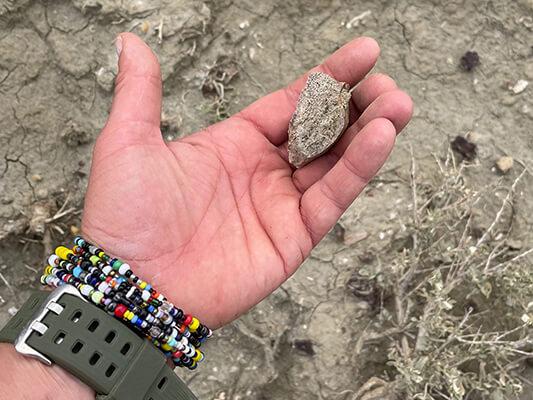
Bone “Float”
This large chunk of bone is unidentifiable and likely cracked off a bone as it eroded out of the side of a hill. If you find many bits of float on the side of the hill, follow them up and see what you might find!
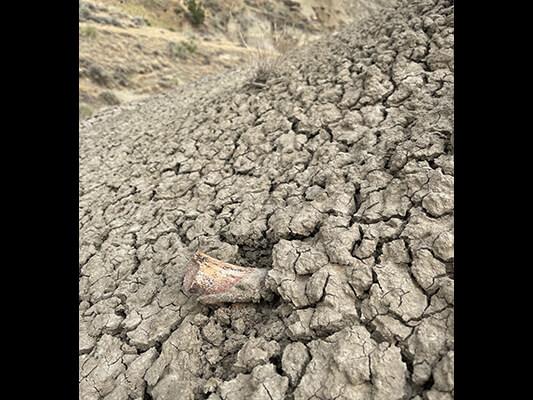
Bone Eroding Out
Up the hill, the rest of the bone was eroding out of the hill. In this case, it was just more float without much behind it, but maybe YOU will find the next big dinosaur discovery!
Finding Microvertebrate fossils
Burpee has several microsites marked that you will likely get a chance to work at. Here, you are looking for tiny fossils of about one millimeter to one-centimeter size range. It often helps to pick a spot, sit down, and look at the ground very closely. You are looking for a variety of species of fish, amphibians, reptiles, birds, and mammals. You may also find larger bits of teeth from dinosaurs.
What do Burpee Volunteers Typically Find?
Most frequently, Burpee field volunteers find bits of fish, including scales, vertebrae, and parts of skull fossils. Volunteers are also lucky to spot limb bones of reptiles or amphibians and fragments of turtles or crocodile scutes.
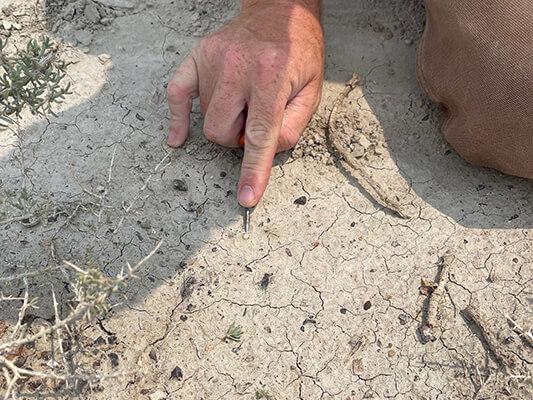
Fish Vertebrae
Josh Mathews uses an awl to point to the fossil. In the dirt, it can be hard to spot. Look for a round shape.
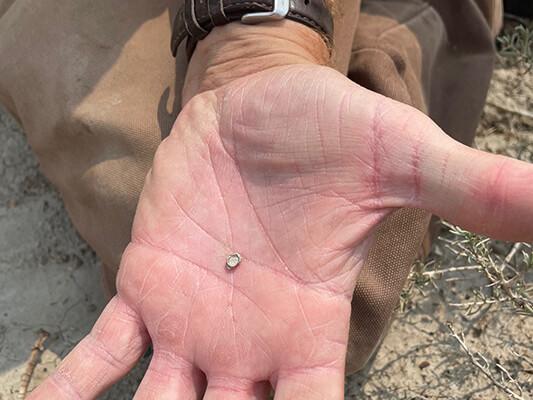
Fish Vertebrae
Josh Mathews holds the fossil in his hand. While it still has dirt on the fossil, it is ready to be placed in the collection bag for sorting back camp.
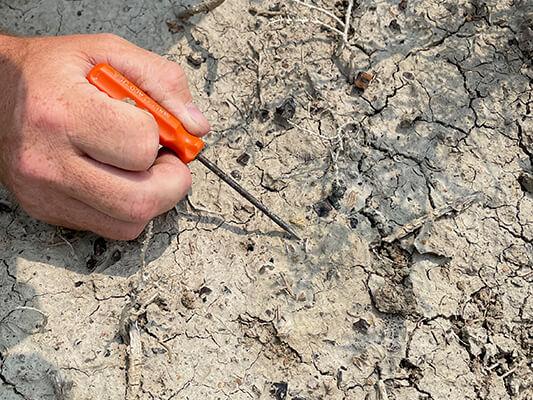
Gar Fish Scale
The awl is pointing to the partly buried jaw bone in the dirt.
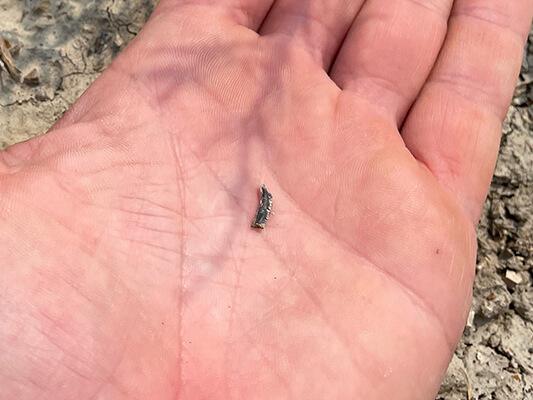
Fish Jaw
After carefully moving the bone away from the dirt, Josh shows the jaw in his hand. Notice the tiny teeth! It is ready for the collection bag.
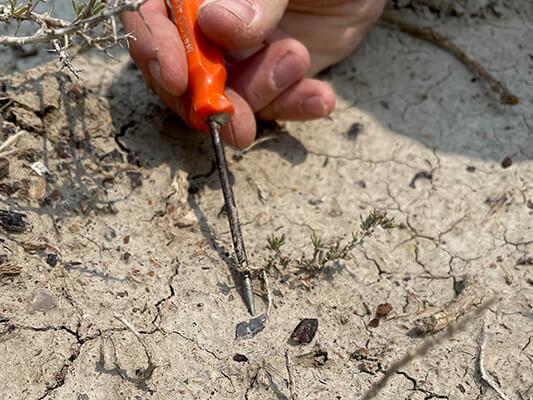
Fish Jaw
One of the most common finds is fish scales. Their dark, shiny appearance is easier to spot than lighter soil.
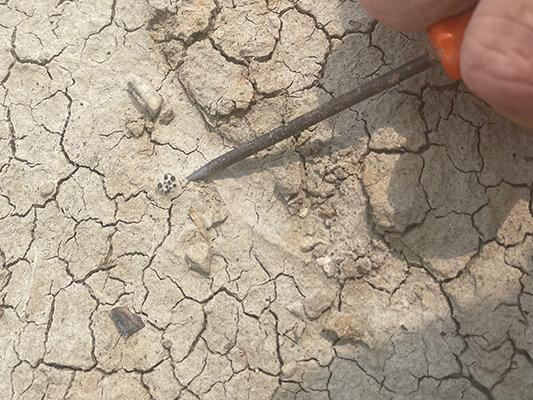
Palatal Bone
The fish palatal bone is easy to spot, with the small bumps often eroding out of the soil. Josh points to one with the awl here.
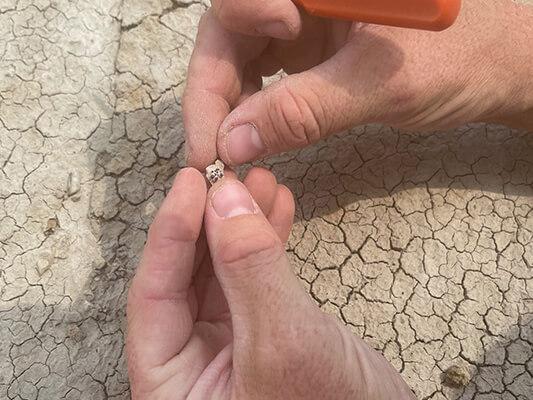
Palatal Bone
After carefully removing the palatal bone from the dirt, Josh holds the fossil in his hands to show size.
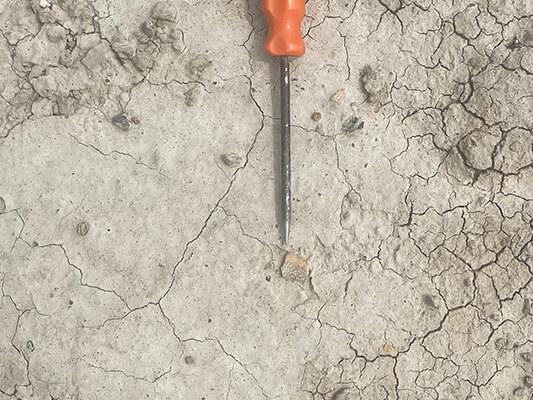
Turtle Shell Fragment
In the dirt, they can be difficult to spot! Look for the puckered outer shell as a good indication it is a scoot of a turtle or maybe a croc!
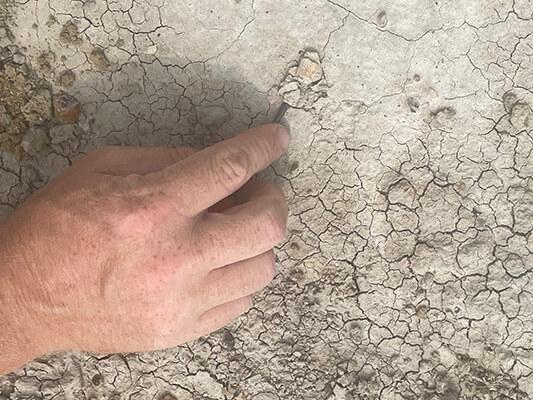
Turtle Shell Fragment
Josh uses the awl to remove dirt around the shell fragment carefully. The fragment can then be placed in a collection bag and brought back to camp for sorting.
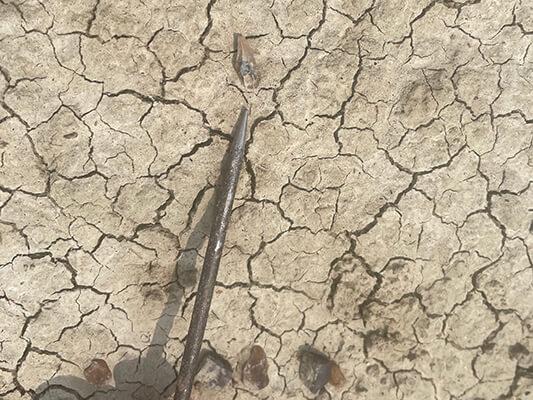
Triceratops Tooth Fragment
Not every fossil at these sites will be part of a small animal. This is a fragment of a shed triceratops tooth. Look for the pearlized color that often indicates a toothy bit!
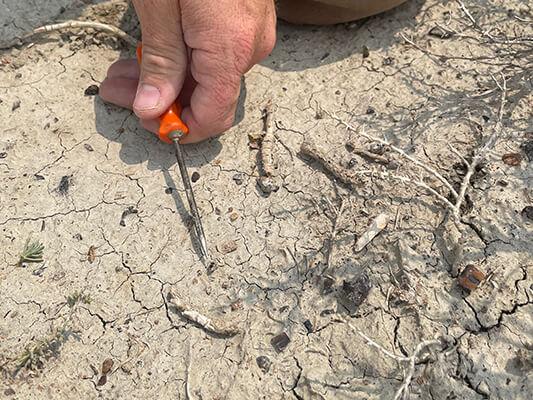
Vertebrae
It can be hard to distinguish a rock from a microfossil when you are getting started. Gently flipping over a possible fossil (or rock) can give you more information.
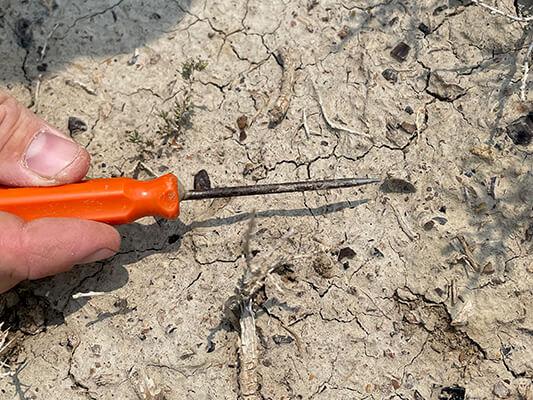
Vertebrae
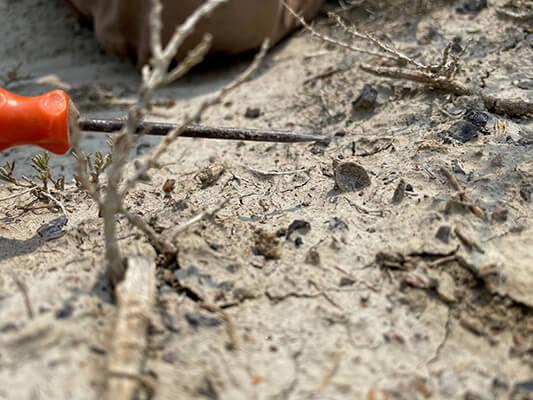
Vertebrae
After gently moving the vertebrae and observing from a different angle, it is clear it is not a rock!
